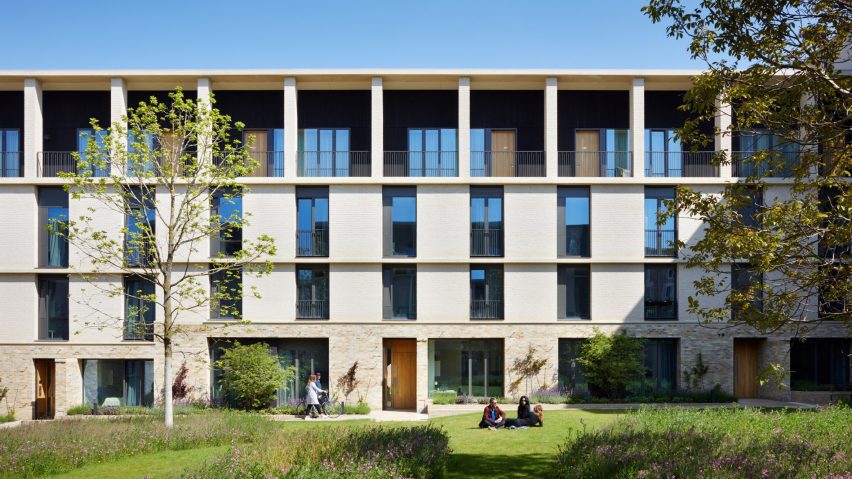
Stanton Williams draws on traditional urban layouts for Key Worker Housing in Cambridge
British practice Stanton Williams' 2019 development of key worker homes, retail and public spaces in Cambridge has been shortlisted for both the 2021 RIBA Stirling Prize and the 2021 RIBA Neave Brown Award.
Comprising ten pale brick housing blocks interspersed with parks, the scheme provides 264 homes for university staff. It is the latest to complete in the University of Cambridge's sustainability-focused development of Eddington, North West Cambridge, which began in 2013.
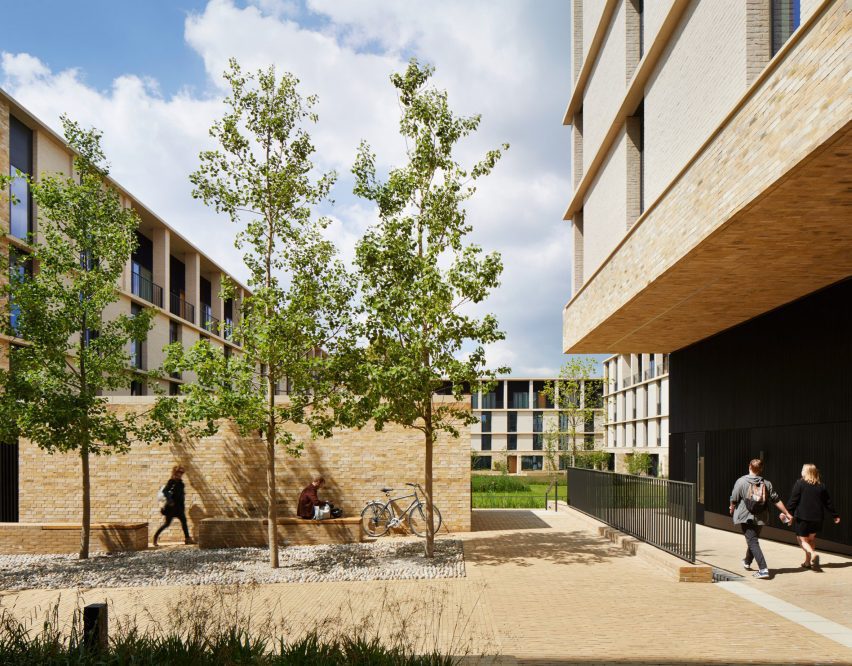
The linear plan of the 23,000-square-metre site sees each housing block given subtly different finishes, broken up by courts and squares that differ in scale and function in reference to the traditional materials and urban layouts of Cambridge.
"Our designs build upon the principle of a 'network of spaces' differentiated in scale and character, that create an engaging public realm analogous to the traditional city," said Gavin Henderson, principal director of Stanton Williams.
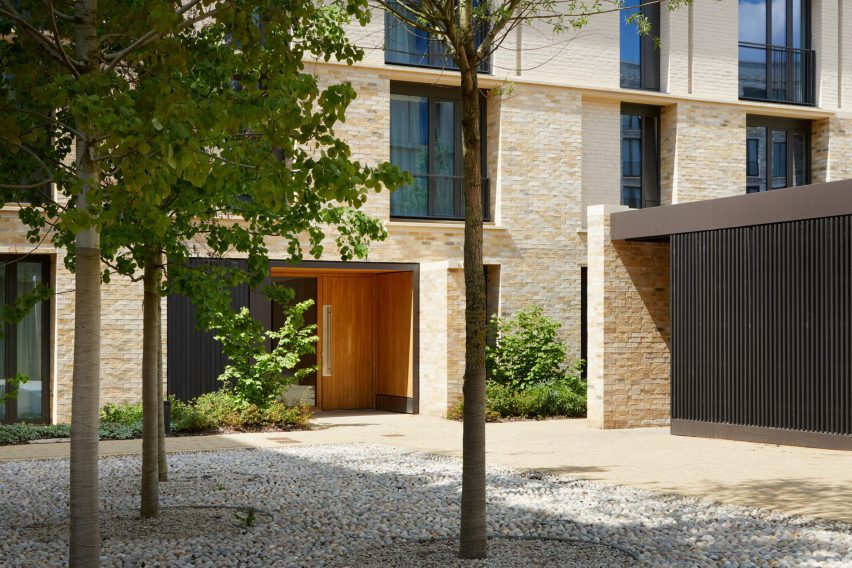
At the eastern end of the site is an urban-feeling public market square surrounded by ground-floor retail units. At its western end, four large housing blocks wrap around a central, semi-public landscaped court.
A more intimate-feeling central section sees housing blocks loosely enclose a series of smaller external spaces, cut through by public routes that are activated and partially covered by cantilevers on the blocks above.
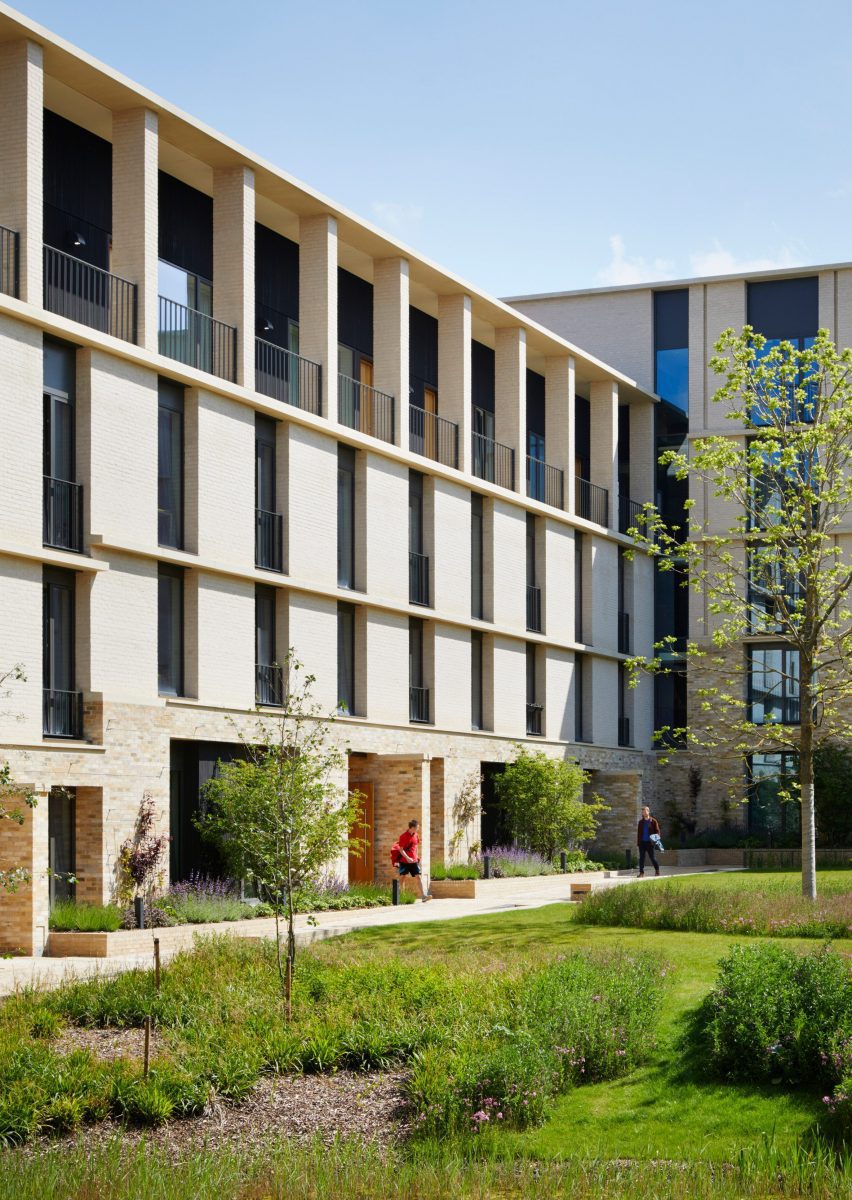
Dotted across the site are six pavilions for parking bicycles, designed to break down the scale and massing across the site, and to encourage social interaction among those arriving by bike.
Responding to their immediate contexts, the external finishes of the blocks have been subtly varied. Distinctive projecting lintels overlook the western court and contrasting tones of brickwork are found across the lower storeys of the smaller blocks to the east.
"The palette of materials, which includes two tones of brickwork and traditional cobblestones, references the materiality found in the domestic architecture of Cambridge," said the practice.
The cycle pavilions are designed as miniature courtyards in themselves, with a ring of bicycle parking covered by a slatted timber canopy around a small rain garden and seating area at their centre.
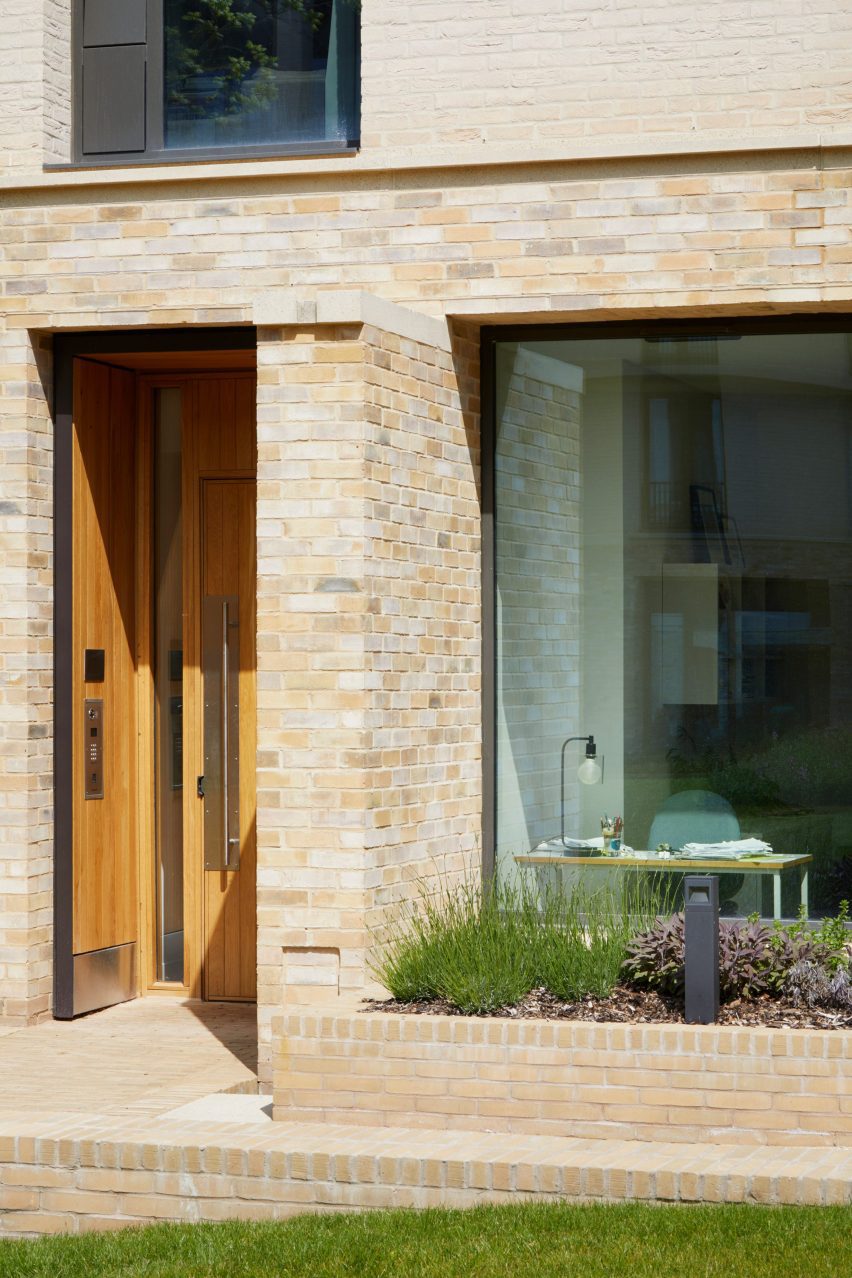
Floor-to-ceiling windows, recessed balconies and small planted yards maximise light and air in the interiors, which are simply finished with white walls and wooden floors.
Where possible, the apartments have been made dual-aspect to allow for views across the site and for effective natural ventilation.
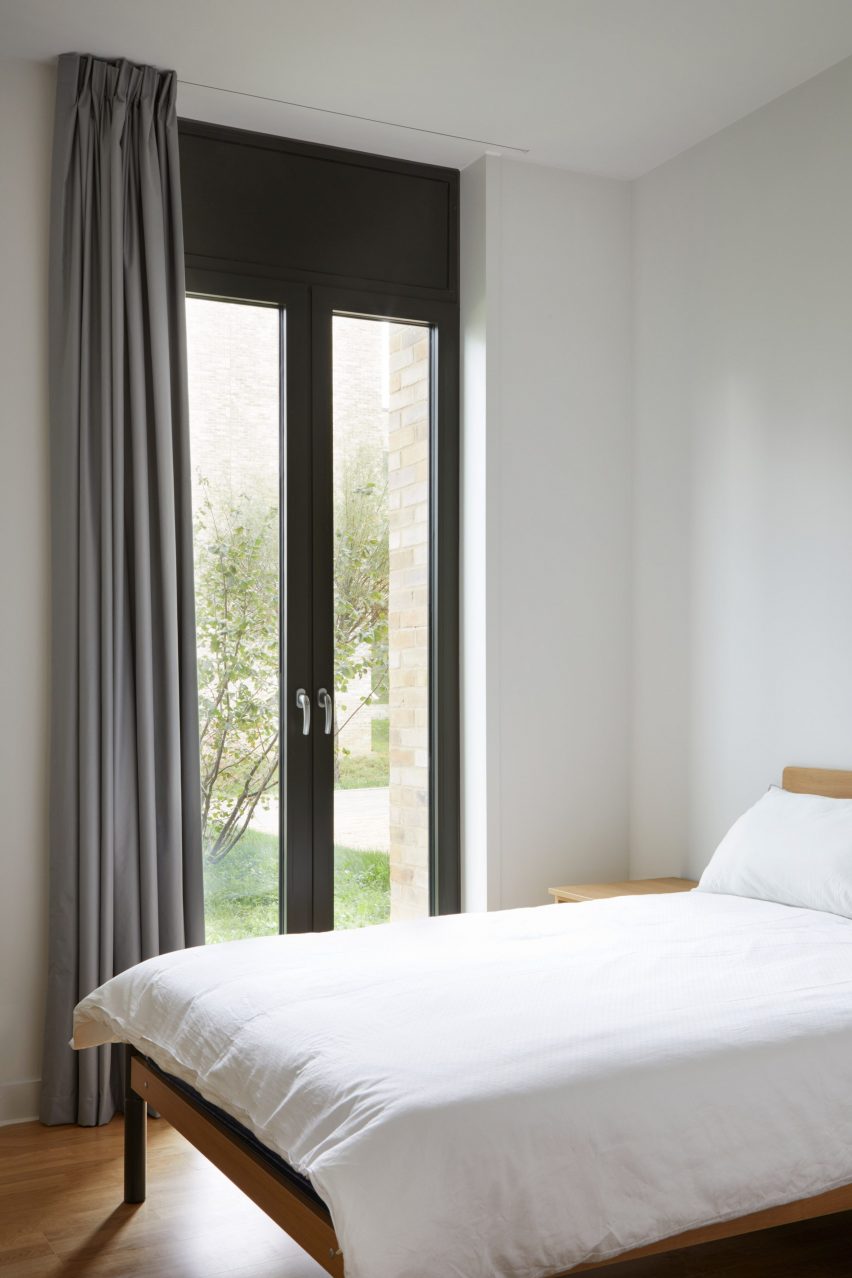
In line with the sustainability goals of the North West Cambridge development, the scheme includes site-wide rainwater harvesting and use of combined heat and power plants.
The development has involved both established and emerging firms to-date, including Mecanoo, which also designed a series of key worker housing blocks, and MUMA Architects, which designed a community centre and kindergarten.
Photography is by Jack Hobhouse.
Project credits:
Architect: Stanton Williams
Project manager: Turner and Townsend
Cost manager: Gardiner and Theobald
Planning and masterplanning consultant: Aecom
Soft landscape architect: J+L Gibbons
Structural engineer: Aecom (formerly URS)/MLM Group
MEP engineer: Aecom (formerly URS)/Hoare Lea
Building physics consultant: Aecom (formerly URS)/HRS Engineering
Transport consultant: Peter Brett Associates
CDM consultant: Faithful and Gould
Code for Sustainable Homes and BREEAM assessor: NHBC
Main contractor: Wates Group